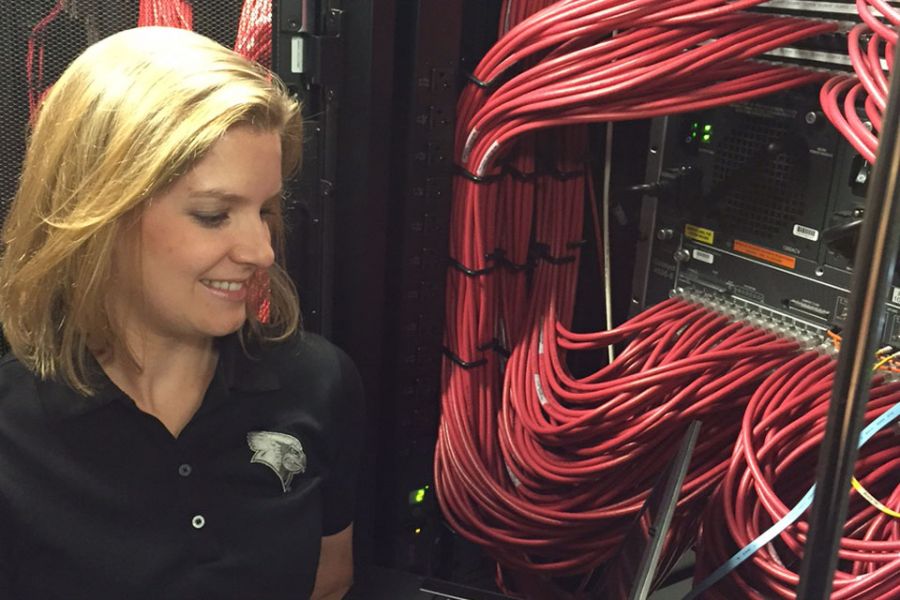Have you ever thought about what goes on behind the scenes to ensure we can communicate with each other on (and off) campus on a daily basis?
We rely on our email, phone, and Internet connections and rarely think twice about them. Making sure everything runs smoothly is the responsibility of the Networking and Infrastructure Communication teams within Administrative Technologies.
Infrastructure Operations and Networking (ION) teams design and maintain the phone and data network infrastructure, including over 1,900 network devices that spread to every corner of campus. All of those devices must be secure and connect to each other as designed in order for the University to perform the millions of electronic transactions that can happen on campus everyday, including sending email messages, research on the Internet, making phone calls, connecting to applications like ReggieNet and iPeople, checking grades, watching YouTube videos, Skyping with friends and family, and much, much more. A single message or web request makes many stops on the way to its destination and it is a constant challenge to the ION teams to keep everything connected and ensure those stops aren’t noticed by the University community.
Total campus bandwidth utilization has increased 0.5 GB since last semester to 4.05 GB, due largely to increased bandwidth demands of the student population. Over the last year, ION has made a number of improvements to the network. Overall bandwidth available to the campus has doubled from 5 GB to 10.5 GB, a new firewall was installed, and load balancers are helping to distribute traffic more evenly.
In addition, the first phase of the campuswide wireless upgrade was completed. This phase included the Bone Student Center, Julian Hall, Milner Library, MLAB, Moulton Hall, Schroeder Hall, the Science Lab Building, the Sustainability House and Williams Hall. ION also established a new guest network which allows University guests to self-register and gain immediate access to the network.
How do they do it? The Networking team installs, operates, and maintains both the wired and wireless network for the entire campus. The Infrastructure Communications team installs, operates, and maintains the campus phone network, emergency phone kiosks, audio and video conference bridging, the University radio system, and University fax and archive infrastructure. This team also maintains and manages the physical infrastructure supporting the network, phone system, and all application systems. They also maintain and support all physical cabling, network and cable jacks, all data closet infrastructure, and data centers to include power, fire suppression, and HVAC systems.
Did you know there are over 60 emergency phones throughout campus, 183 convenience phones, and 4,580 VoIP telephones? There are also 350 data closets all over campus. What is a data closet you ask? A data closet consists of a switch and sometimes up to 100 network cables which are then patched together. Access points must be within 100 meters of the end of the wire, which is why we have data closets on every building across campus and even at the University Farm.
In 1995 there were approximately 17 T1 paths on campus for the phone systems using 68 wires to connect us to the rest of the world. Today we are doing this with just 4 wires, primarily because of the increased use of cell phones and the removal of campus phones from residence hall rooms a few years ago.
The next time you check your inbox, make a phone call, or read the news on the web, remember the teams in ION working hard to make sure the phone and data network infrastructure on campus is in good working order.

